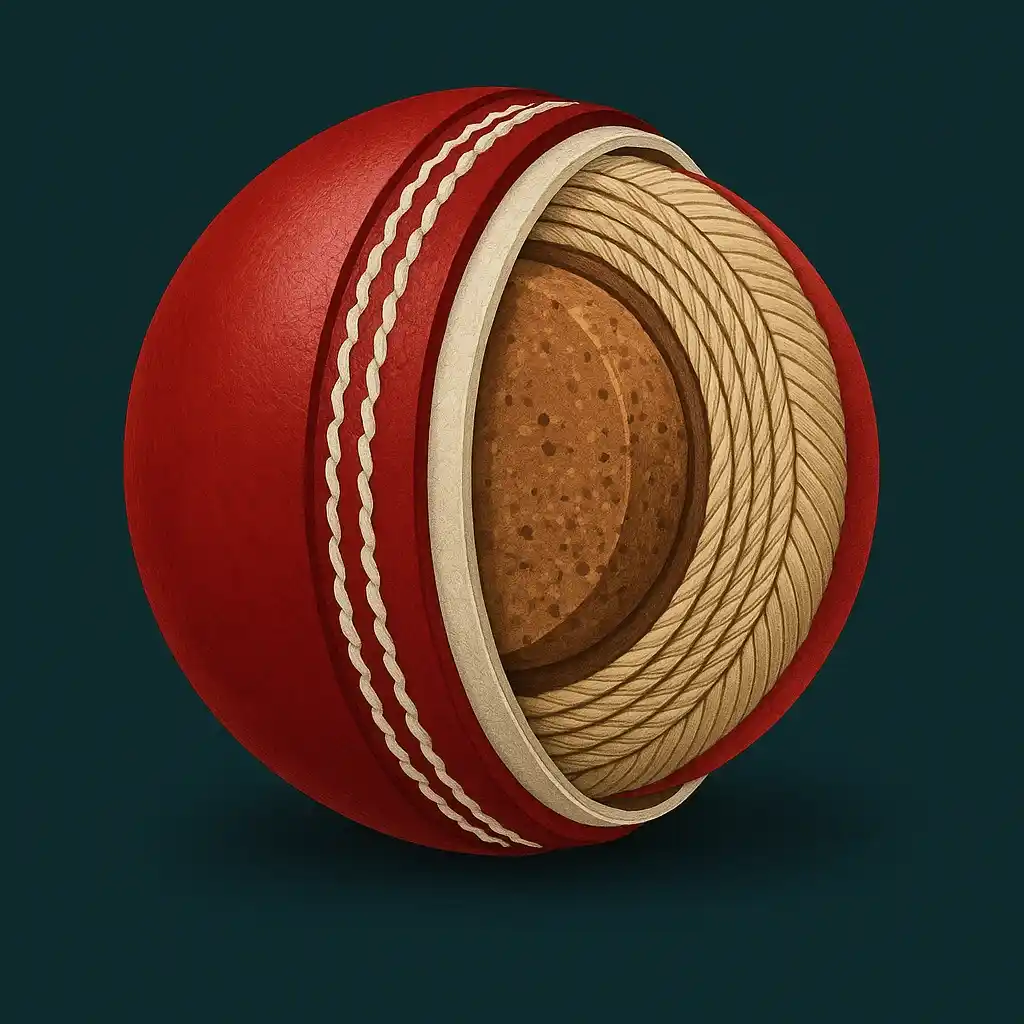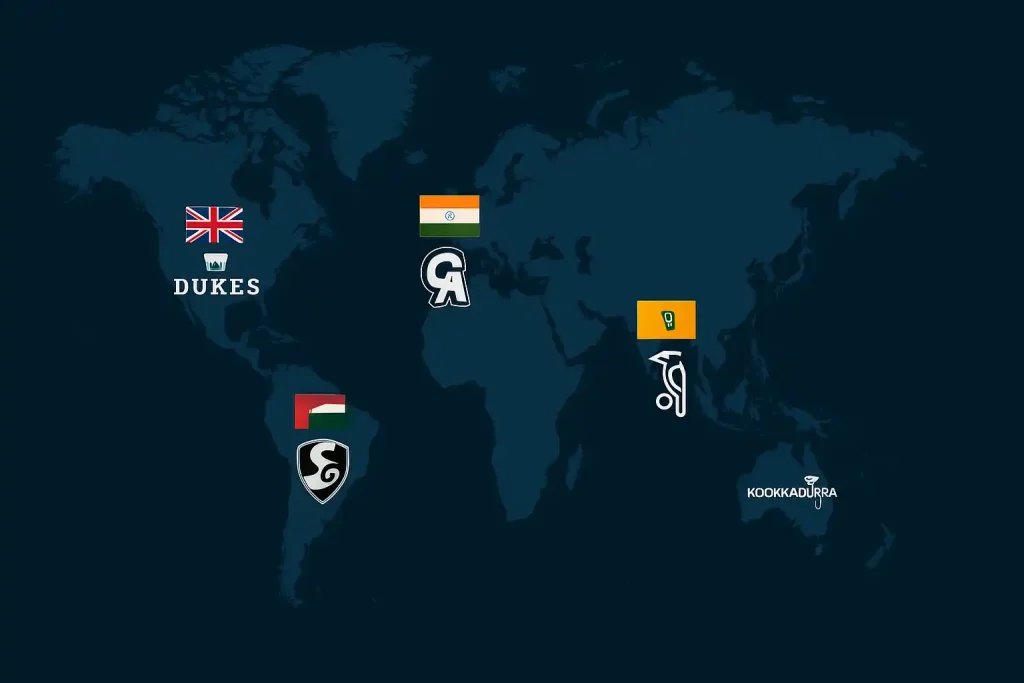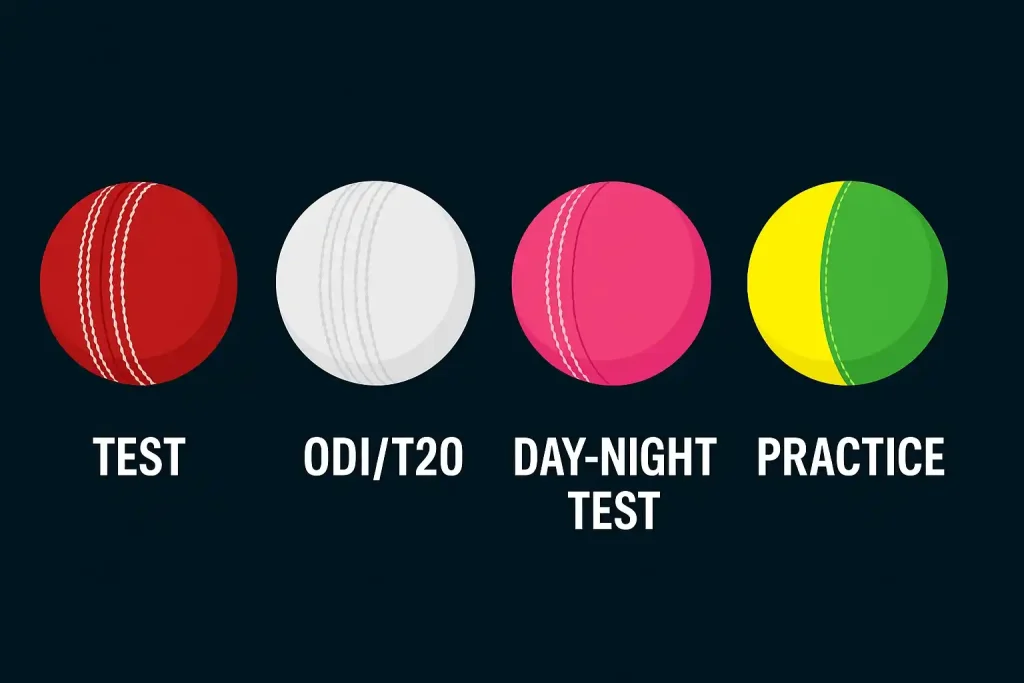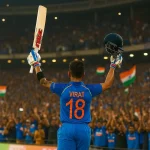
You’d think a ball is just a ball. But not in cricket. No way. Every format, every continent, and sometimes every session seems to ask a different question of the cherry in play. The types of cricket balls used around the world aren’t just cosmetic variations. They define entire matches. Win toss, bowl first, ball swings for 10 overs, and suddenly your seamier looks like Glenn McGrath reborn. Get it wrong? It’s leather chasing leather.
I’ve held them all. The Duke feels heavier in the fingers. The SG has a slightly raised seam and feels softer after a few overs. And the Kookaburra? Smooth, almost smug. Each ball has a personality. And when you’ve played even a handful of serious matches, you stop blaming the conditions. You start blaming the ball.
Breaking Down the Types of Cricket Balls by Format
Let’s get something clear upfront: red balls, white balls, pink balls — they all behave differently. It’s not just the color. It’s how they’re stitched, lacquered, and shaped. Red balls are traditionalists. Test match purists. They swing, they seam, they age gracefully. White balls? The commercial rockstars of T20s and ODIs. Loud, bright, flashy — and dead after 15 overs. Pink balls? The mysterious middle-child. Created for day-night Tests, they swing more under lights and demand their own respect.
And each of these balls is made differently by different manufacturers. You can’t compare a Duke red to a Kookaburra red. They may look alike on TV, but ask a batter in Leeds and one in Melbourne — they’ll tell you it’s a different beast altogether.
Table 1: Types of Cricket Balls by Format and Use
| Ball Color | Primary Format | Key Characteristics | Typical Lifespan in Overs |
| Red | Test matches | Seam movement, long-lasting shine, wears naturally | 80+ |
| White | ODIs and T20s | Early swing, harder lacquer, loses shine quickly | 20-25 |
| Pink | Day-Night Tests | Extra lacquer, exaggerated swing under lights | 50-60 |
This is why bowlers change their grip mid-match. Why spinners tweak finger pressure. Why batsmen squint under floodlights. The ball, in many ways, becomes the scriptwriter of a match.

Top Manufacturers Behind the Types of Cricket Balls
There are names that echo through dressing rooms like folklore: Dukes, SG, Kookaburra. Each manufacturer has shaped how cricket is played in its home region.
Dukes are the artists’ ball. Used mostly in England and the West Indies, their hand-stitched seams hold longer, allowing for swing and movement deep into the innings. Kookaburra, the Australian mainstay, is machine-stitched and flatter, meaning swing dries up faster. That suits the hard, bouncy tracks Down Under. SG, India’s favorite, balances the two — prominent seam, quick wear, ideal for subcontinental spinners.
Here’s what people don’t talk about: bowlers train with different balls depending on where they’re touring. A guy like Mohammed Shami has to recalibrate wrist position when switching from SG to Kookaburra. That’s not small talk. That’s muscle memory being rewritten.
Table 2: Leading Cricket Ball Manufacturers and Usage
| Brand | Primary Usage Region | Key Traits | Used In Formats |
| Dukes | England, West Indies | Hand-stitched, longer swing, durable seam | Test matches |
| Kookaburra | Australia, South Africa | Machine-stitched, early swing, flatter seam | All formats |
| SG | India, some Asian nations | Pronounced seam, roughens quickly | Test matches |
| Readers | Club cricket (UK) | Cheaper variant of Dukes | Recreational |
| Gray-Nicolls | Club and training use | Balanced performance, budget-friendly | Nets, lower-tier matches |
The price of these balls varies too. A top-grade Dukes red ball might cost upwards of $70. Kookaburras come in a range but hover around $50 for international-level balls. SG sits somewhere in between. For local matches, there are knock-off brands or lower grades, but anyone serious knows that the ball you use is half your strategy.
Why Seam and Shine Matter More Than You Think
One of the first things I learned in league cricket was that the guy who shines the ball right can change a game. There’s a method to it. Sweat on one side. Constant polishing. And only one side — always. Because swing isn’t luck. It’s physics. The smooth side lets air glide. The rough side resists. That imbalance causes drift.
Some balls take shine better. Dukes are known for holding shine and shape longer. Kookaburra starts strong but goes soft. Pink balls are extra lacquered to stay visible and last under lights, but sometimes they swing too much, even for the bowler.
In matches with no dew, the red ball sings. Under lights or humid conditions, the pink ball dances. But in dry, dusty afternoons with an SG, you’re relying more on reverse swing and grip off the pitch.
The Ball as a Strategy, Not Just Equipment
This is what separates elite teams from the rest. They don’t just select bowlers for skill. They pick them based on how they partner with a specific ball. England lines up Anderson and Broad with Dukes. Australia lets Starc and Hazlewood do damage with Kookaburras. India? Jadeja becomes a monster with an SG.
It’s not a coincidence. It’s by design. That’s why teams ship balls for practice weeks in advance when on tour. They know the margin between great and average often comes down to how well your hand understands the leather.
I’ve seen matches where switching balls (due to damage) flipped momentum. A newer seam meant extra nibble. An older one dulled reverse swing. The ball isn’t just a piece of gear — it’s a storyline waiting to unfold.

Modern Innovations and Where the Game Is Heading
There’s chatter now about smart balls — tech-enabled leather that tracks spin rate, seam position, and release angle in real time. Trials have happened in franchise cricket. Coaches love the data. Purists hate the disruption.
Meanwhile, some formats are experimenting with longer-lasting coatings, anti-dew layers, and even custom seam placements to support spin. The pink ball is still being tweaked. Some say it needs better balance between swing and visibility. Others want a version tailored for Asian wickets.
But one thing’s for sure: the ball will never be a settled debate. As long as cricket evolves, the types of cricket balls will remain its most controversial character.
Final Thoughts: Respect the Ball, Understand the Game
Whenever I watch a young player nervously cough up the shine on a new tennis ball, a quiet grin creeps across my face. It’s a silly habit, I know, but it marks the very first instinct of a bowler who cares. As that curiosity deepens, however, something far bigger than wrist positions and seam angles begins to emerge.
The different grades of cricket balls no longer sound like a list in an equipment guide; they become silent, persistent coaches. Hardness, leather grain, seam height, even air pressure-they are the hidden hands steering every delivery, every session under the sun. Learn their quirks, treat them with respect, and the game itself opens up.
In truth, matches are rarely settled by raw talent alone. More often, they tip in favor of the side that paused long enough to listen first to the pitch, then, just as significantly, to the ball.

Meet Arjun Kushaan, a passionate cricket analyst at The Cricket24x7. From street matches in his childhood to competitive college tournaments, cricket has always been a central part of Arjun’s life. With a strong background in data analysis and a natural affinity for numbers, he brings a fresh, analytical lens to the game. At The Cricket24x7, Arjun blends his deep love for cricket with his data-driven approach to deliver detailed insights and well-rounded coverage for fans of the sport.






